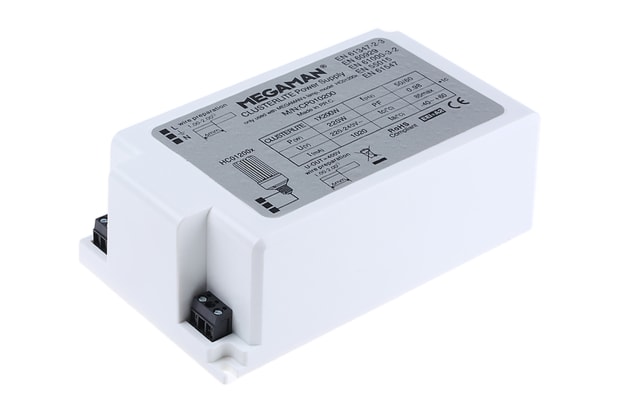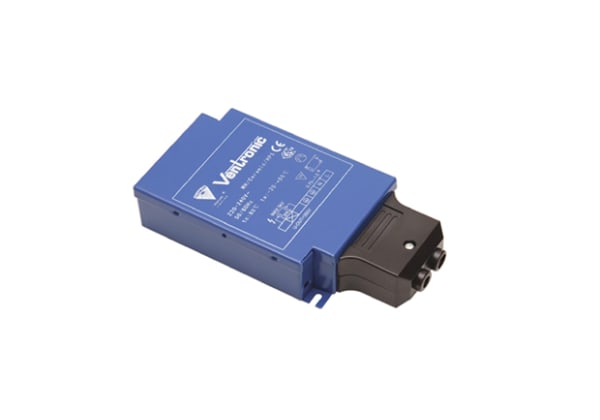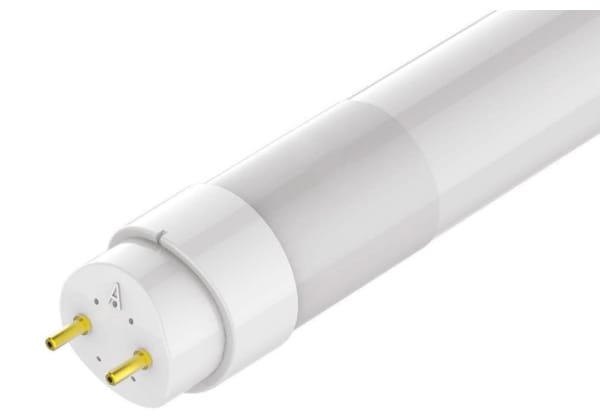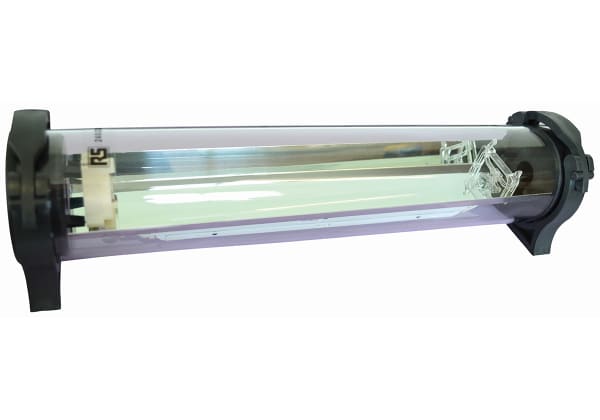- Published 23 Apr 2023
- Last Modified 29 Aug 2023
- 5 min
Electronic Ballasts vs Magnetic Ballasts
Magnetic or electronic ballast - which is the most commonly used and for which type of lighting?

Ballasts are an essential part of fluorescent lighting. What do they actually do? And what’s the difference between electronic and magnetic ballasts? We take a deep dive into each and weigh up the pros and cons.
What is a Lighting Ballast and What Do Ballasts Do?
A lighting ballast is a component of a fluorescent lighting or High-Intensity Discharge (HID) unit that regulates the current flowing through the tube or bulb. Without the ballast, the tube would effectively be connected directly to the mains, and that could cause two problems. First, with no means of regulating the current going into the tube, it would simply keep energising itself, and that would create a real risk of the tube exploding. The second purpose is to iron out any fluctuations in current and therefore allow a smooth, flicker-free light source.
Lighting ballasts work in a couple of ways depending on what type they are. Read on for a brief summary of the types of ballast and the differences between them.
In a typical ceiling-mounted fluorescent light tube setup, the ballast is hidden away inside the main housing where it can’t be seen. The type for a striplight will generally be about 30cm long and 3cm square, but they come in various sizes for the different fittings. Small compact fluorescent lamps (CFLs), which are the original “energy efficient” type of bulb in the post-incandescent era, have miniature ballasts fitted into them as they connect directly to the mains.
Types of Ballasts for Lighting
There are two types of lighting ballasts in use: electronic and magnetic. Most modern installations use electronic ballasts, but there are still plenty of legacy systems using magnetic-type ballasts, and they are still available from some specialist suppliers. They are gradually being phased out, however, typically as they are replaced. If you’re simply replacing fluorescent tubes with LED ones, however, it’s important that you know which type of ballast is in use, as you’ll need to use the correct type of tube. Alternatively, you can choose LED tubes designed for universal lighting ballasts, so it doesn’t matter which kind is present.
Electronic Ballasts
What are Electronic Ballasts?
Electronic ballasts are the modern type of fluorescent tube ballast and have been in production since the 1990s. They are superior in almost every way to the old-style magnetic ballasts. First, they are much more efficient than magnetic ones, as they have finer control over the way the power comes in and goes out of the unit. The efficiency is also partly because they run much cooler. Needless heat generation is always inefficient, so cool running helps keep costs down and reduces the risk of overheating or damaging surrounding materials over time. They should also increase the lifespan of the lamp.
These modern ballasts are also smaller and lighter, which means that light-fitting designers can make lower profile, sleeker designs, and they can theoretically be fitted with less engineering to bear their weight (although in practice that’s a marginal advantage). As far as daily use is concerned, they are much quieter to run – the typical “buzz” of a fluorescent tube isn’t caused by the tube itself, but by the ballast. It also doesn’t require a starter, as the starting current boost is created electronically rather than through a separate physical device.
On the negative side, they are more expensive to purchase, although the cost is offset over the lifespan thanks to lower energy consumption. There’s also the potential for interference from nearby electronic devices, although this is rarely a practical concern in normal use. Poorly made electronic ballasts can suffer if there’s a power surge, but good quality lighting ballasts will have surge protection built in.

How Do Electronic Ballasts Work?
Essentially, the electronic ballast has much more control over the way electric pulses are sent to the tube, and this is carried out by the components inside the unit. Whereas a magnetic ballast can only deliver about 100 pulses per second, an electronic device can deliver tens of thousands of pulses per second, with the specific number being controlled by the electronics measuring and varying the delivery according to need. That means the tube runs more efficiently, with more precise power control.

Magnetic Ballasts
Magnetic ballasts are a somewhat obsolete technology nowadays. Their only draw is that they are cheaper than electronic ones as they are pretty basic inside. They are generally replaced like for like only when it’s more convenient to do so, for example, if there’s a stock of magnetic ballasts to be used up and the user does not want to invest in the newer electronic ballasts (or, indeed, LED tubes).
Magnetic ballasts are sometimes called chokes because they are effectively set up to limit the current flowing around the lighting circuit. They do this by harnessing the electromagnetic field that is generated when current flows through a tightly wound coil. The field can actually trap most of the current, only allowing a small amount out. The power output is essentially controlled by the thickness of the coil. It’s a relatively crude way to do it, but without delicate electronic components, it can be a sturdy piece of equipment that’s difficult to damage on the building site or in transit.
Best Ballast for Energy Consumption
Without a doubt, the electronic ballast type provides the best energy consumption as it provides a regulated flow of power without wasting energy on choking and heating up. They are pretty much standard nowadays for new fluorescent tube installations.
Further Reading
Related links
- The Complete Guide To Lighting Ballasts
- Lighting Ballasts
- RS PRO 1 x 14 → 18 W 1 x 22 W
- Osram 21 W Electronic Compact Fluorescent Lighting Ballast, 220 → 240 V
- Osram 16 W Electronic Compact Fluorescent Lighting Ballast, 240 V
- ELT 18 W 30 W 39 W Electronic Fluorescent Lighting Ballast, 220 → 240 V
- Philips Lighting 22-42 W Electronic Lighting Ballast, 220-240 V
- Philips Lighting 18 W 220-240 V


